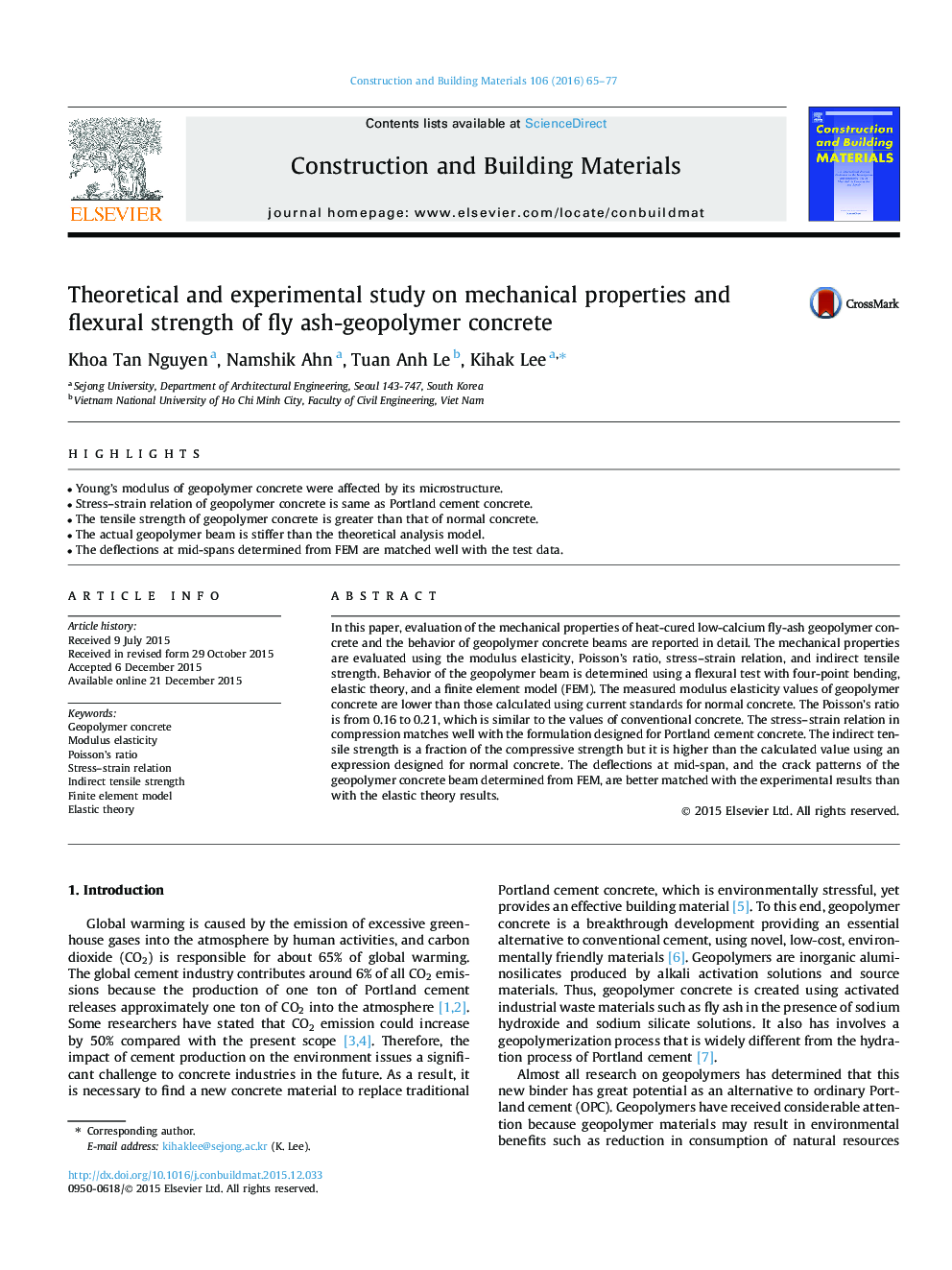| Article ID | Journal | Published Year | Pages | File Type |
|---|---|---|---|---|
| 256469 | Construction and Building Materials | 2016 | 13 Pages |
•Young’s modulus of geopolymer concrete were affected by its microstructure.•Stress–strain relation of geopolymer concrete is same as Portland cement concrete.•The tensile strength of geopolymer concrete is greater than that of normal concrete.•The actual geopolymer beam is stiffer than the theoretical analysis model.•The deflections at mid-spans determined from FEM are matched well with the test data.
In this paper, evaluation of the mechanical properties of heat-cured low-calcium fly-ash geopolymer concrete and the behavior of geopolymer concrete beams are reported in detail. The mechanical properties are evaluated using the modulus elasticity, Poisson’s ratio, stress–strain relation, and indirect tensile strength. Behavior of the geopolymer beam is determined using a flexural test with four-point bending, elastic theory, and a finite element model (FEM). The measured modulus elasticity values of geopolymer concrete are lower than those calculated using current standards for normal concrete. The Poisson’s ratio is from 0.16 to 0.21, which is similar to the values of conventional concrete. The stress–strain relation in compression matches well with the formulation designed for Portland cement concrete. The indirect tensile strength is a fraction of the compressive strength but it is higher than the calculated value using an expression designed for normal concrete. The deflections at mid-span, and the crack patterns of the geopolymer concrete beam determined from FEM, are better matched with the experimental results than with the elastic theory results.
